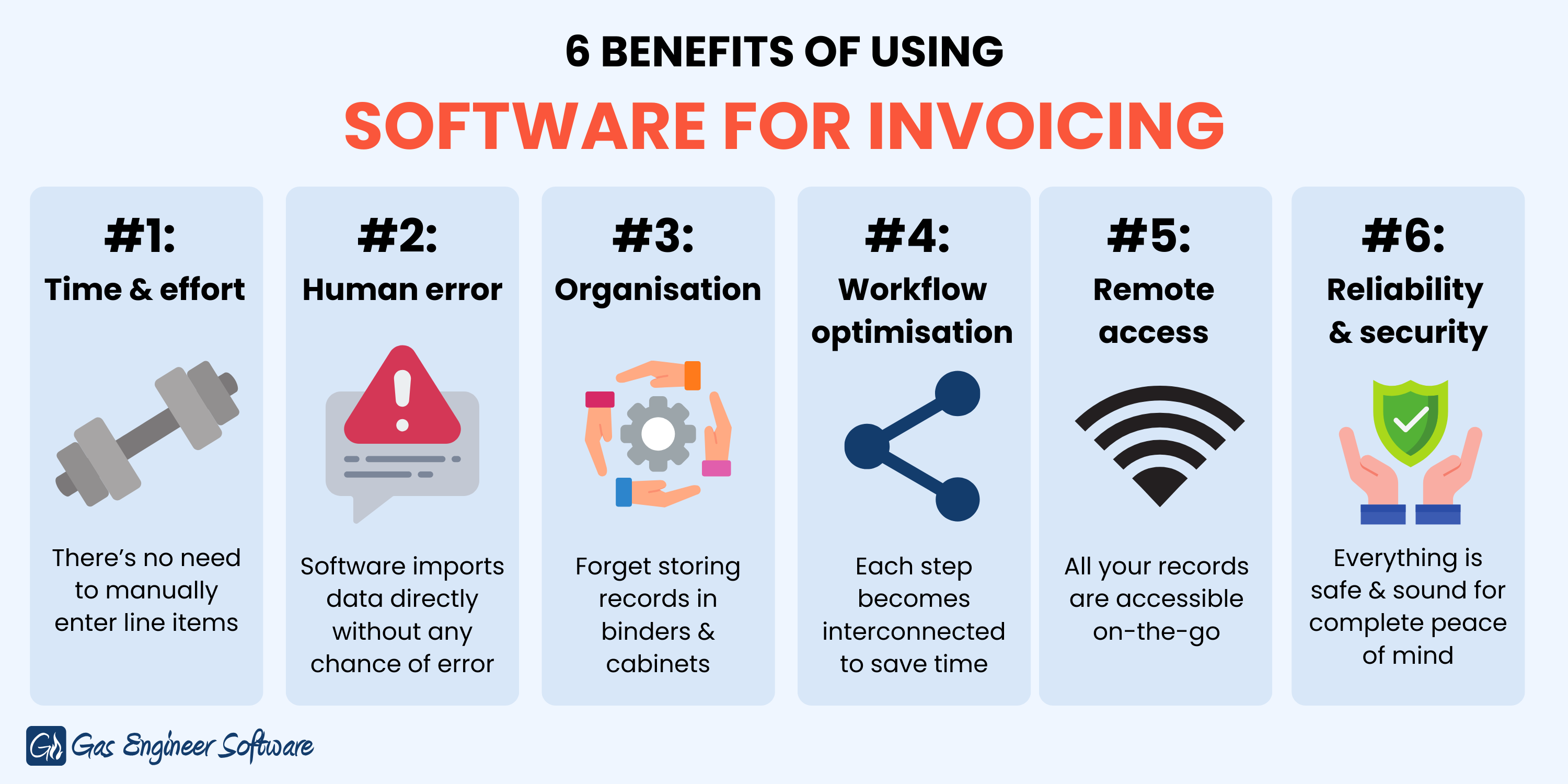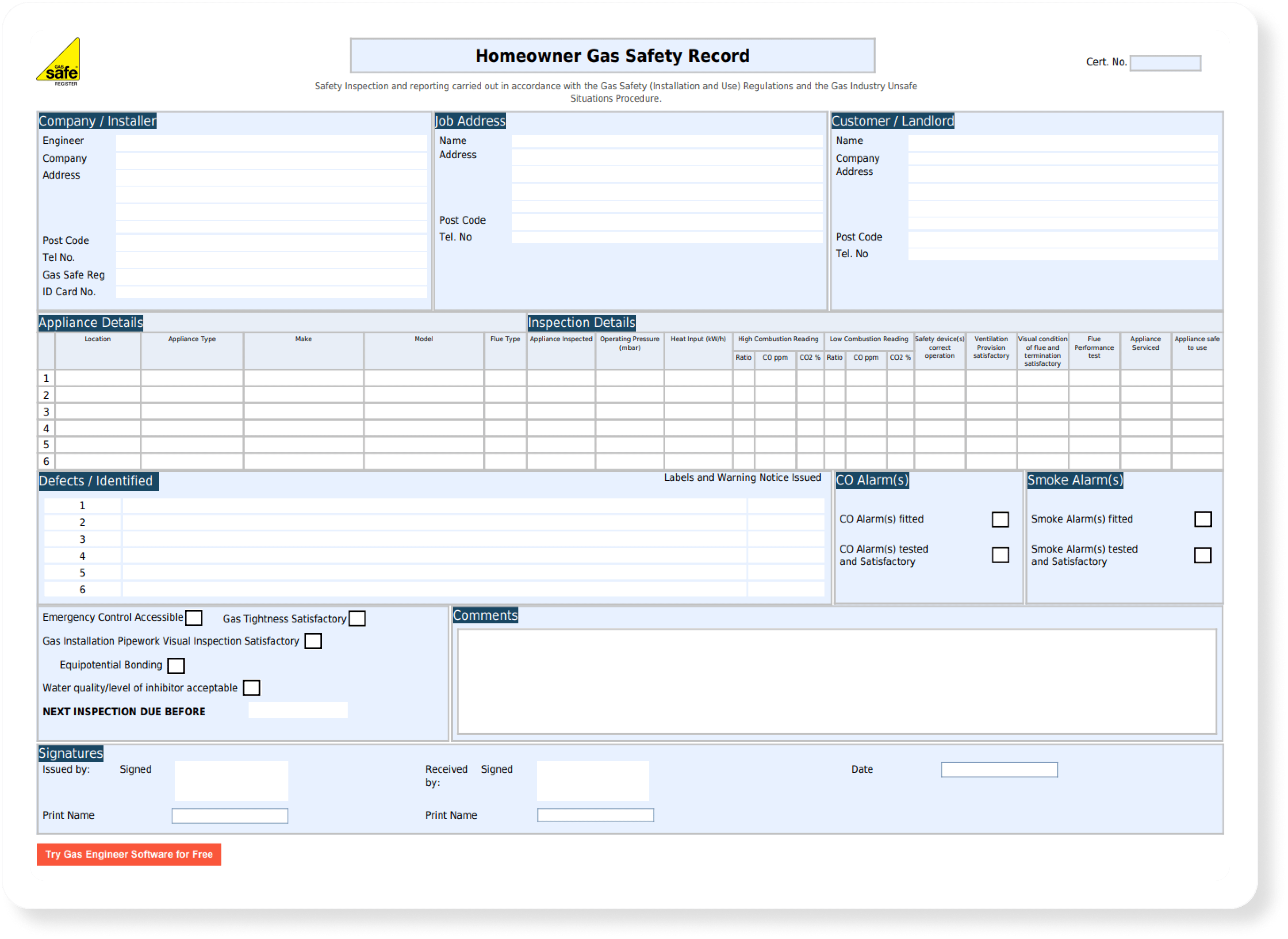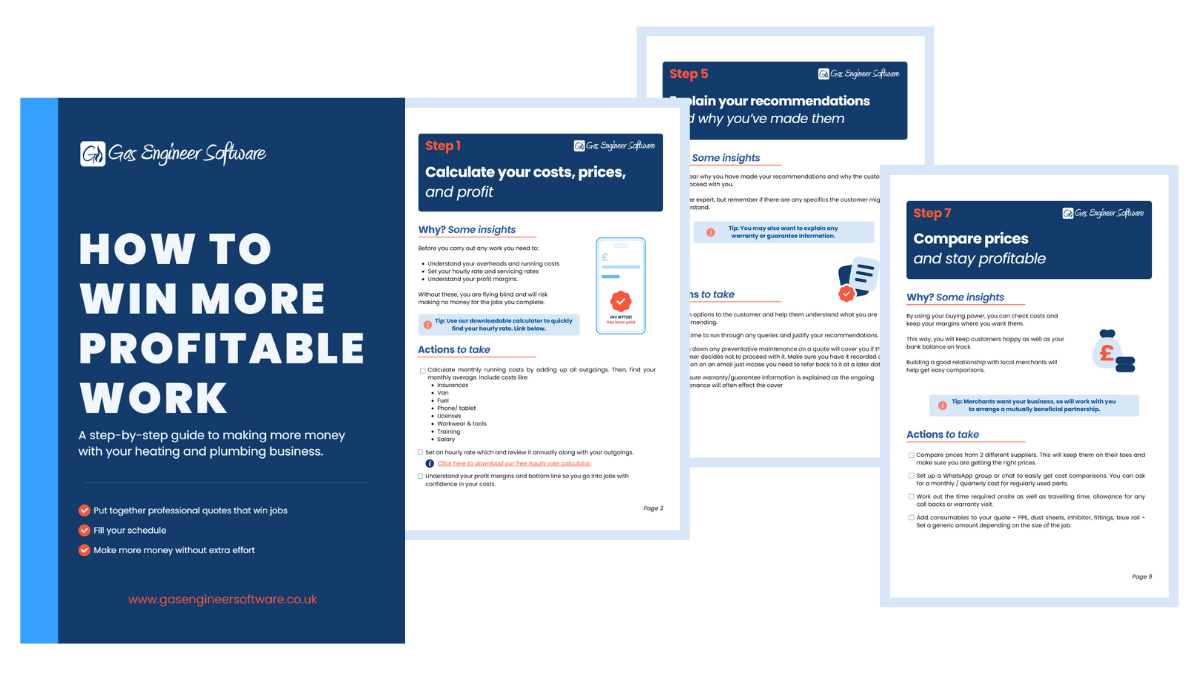Invoicing on Paper vs Software: What’s Best for Gas Engineers?
![[Featured Image] Invoicing on paper vs software-min Gas engineers can benefit greatly from issuing digital certificates](https://gasengineersoftware.co.uk/wp-content/uploads/2023/11/Featured-Image-Invoicing-on-paper-vs-software-min.png)
Sending off an invoice feels great. It’s (usually) a wrap on the job and you’re about to get paid.
But that doesn’t mean all the paperwork isn’t a pain. All those evenings and weekends spent doing admin, losing track of unpaid invoices, keeping all your accounts in order – it’s a big chunk of you or your team’s time.
With invoices being filled out for every job, it makes total sense to figure out ways you can speed up and improve the process. Compared to paper, software offers a much more sleek and streamlined process from start to finish. But what are the specific benefits? And why should a gas engineer who’s always issued invoices on paper make the switch?
This article will answer both these questions and more. We’ll compare paper and digital invoices, put some software myths to rest, and show you how you can get started.
A detailed comparison between software and paper invoices:
Whether you’re a seasoned engineer that’s been using paper for years or a new gas engineer weighing up his options, it’s important to know the key differences. We find that there are 6 factors which set them apart:

#1: Time & effort
Completing an invoice on paper means writing everything out line by line. You’ve probably got to go back and check the quote and of course make sure anything else you did on the job is on the invoice. Unless you want to carry around a pad of printed invoice templates, this means doing it later on after your work day and going to get it posted.
Some do create invoices on the computer and time emailing them, but everything is still created and each line entered manually.
One of the biggest benefits of proper software is that it speeds up this entire process. You’ll have your quote on your smartphone in your pocket, and it can be automatically turned into an invoice in a just few clicks. After quickly checking it, you’ll be able to send it out on the spot and get it to your customer almost instantly via email. By cutting out unnecessary manual steps, you’re free to focus on more important things.
#2: Human error
Everyone makes mistakes when they write things out. Customer details, line items, totals, postage – there’s simply much more to go wrong when completing invoices on paper.
Good software is much more accurate. Customer data is pulled from your database – so it’s guaranteed to be correct – and there won’t be any issues with the readability of your handwriting, calculating errors, problems with postage, and so on.
#3: Organisation
Actually creating the invoice is only half the battle. If you don’t want filling out your tax forms to be a huge ordeal, you’ve got to make sure you’re storing and organising your own copies of all these invoices. Often, this means huge binders, filing cabinets, and meticulous organisational skills.
With software, you don’t even have to think twice about organisation. Your invoices will be automatically saved on the cloud and can be easily sorted by searching for customer addresses, names, and dates. When tax season comes around or whenever you need to go back and check an invoice, you’re able to access it within seconds on your phone or computer.
#4: Workflow optimisation
With a paper-based system, each stage of a job (the quote, scheduling, work, invoice, and everything else) is done separate from each other.
Software helps bring this whole multi-step process together. Instead of a disjointed workflow, you’ve got a streamlined system where each step leads into the next without any wasted time. A quote can be instantly turned into an invoice, which is then instantly organised and stored on the cloud – all without a second thought.
#5: Remote access
There are times when you’ll need to go back to an old invoice – maybe you’ve misplaced a copy, need to resend it to your customer, or anything else. If all your invoices are done on paper, you’ll have to head back to the office and sift through your filing cabinets for the right invoice.
By comparison, your entire collection of software invoices can be accessed from just about anywhere in a matter of seconds. This of course applies to other pieces of paperwork like quotes and job sheets, too.
#6: Reliability & security
The simple fact that paper invoices (and any other paperwork, for that matter) are tangible make them feel more reliable and secure. But the truth is they’re not as safe as you might think: floods, fires, being misplaced or lost – they’re all ways in which your paperwork can get completely ruined and cause a chain reaction of problems for you to solve.
Software, on the other hand, is much more reliable and secure. There’s no chance of flooding or fire damage, as cloud providers have multiple physical server locations to back up your data, and encryption is used to protect against cyber attacks and hackers. Even though you can’t hold your invoices (unless you decide to print them off), they’re much safer on the cloud and in software than they are on paper.
Misconceptions that stop engineers from using software certificates
Software invoices are complicated
Software developers (like us at Gas Engineer Software) have a couple simple goals: to save your time and help you make more money.
It would make no sense for the software to be complicated, so we’ve invested lots into making our app as intuitive and accessible as possible. We want gas engineers to effortlessly create invoices and spend time where it counts, not try to get software to behave.
The result is an easy-to-use platform which anyone can pick up in no time. In fact, we recently asked how long it took our users to learn the software, and 70% said less than a week, 17% within a day.
It costs far more than it’s worth
There’s no way around it: price matters. One of the problems faced by software is that most of the benefits are long-term. You might not notice an immediate difference, but it’s the hours and hours you build up week on week that can radically transform the way you work.
Our advice is to look at the price from an analytical perspective. Sign up for a free trial and figure out how much time you’re actually going to save doing invoices digitally. Then, compare this to your hourly rate. This will help you better visualise the long-term benefits on offer.
How can I trust keeping my invoices in “the cloud”?
The fact of the matter is, cloud storage (storing things on the web) is much, much safer than a filing cabinet and paper will ever be.
As we mentioned above, you can’t lose something on the cloud, and it won’t get destroyed in a fire or flooding. We get that it’s difficult to trust something you can’t touch, but good and reliable software uses multiple levels of backup and storage so that even if something happened, it can always be recovered. Any reputable software provider like Gas Engineer Software will also be using encryption to keep your data safe from hackers and leaks. Read more about the safety of your data.
My paper invoices are working just fine. Why should I switch to software?
Paper will always ‘get the job done’, but that doesn’t mean there can’t be improvements.
When we’re talking about benefits such as saving time, even a small difference can make a huge impact long-term.
Going paperless doesn’t promise instant results, but instead a steady improvement and quality of life benefits.
How to get started with software invoices
The industry as a whole is rapidly moving towards digital solutions. Especially as younger generations enter the trade, software is used more and more for everything from job management to paperwork.
Invoices are just one of many things that gas engineers can use software for to help them in their day-to-day tasks. Apps like Gas Engineer Software are specifically designed to help engineers save time and make more money – about 7 hours per week on average.
Moving from paper to software isn’t a complex and lengthy process, and the transition can be a seamless and gradual one. After a while, your old paper records will become redundant and you’ll become a fully software-based business.
Next steps:
If you’ve been thinking about implementing software into your workflow to save time, here’s what you can do next:
- Visit our resources centre where you'll find more articles like this one and our free gas rate calculator.
- Start a free trial to see exactly how our software works for your business.
- Watch our video demo to get an idea of how our software works. You can also book a 1-on-1 session with our customer success team for a more personalised experience.
- Know an engineer who's still using paper? Help them and us out by sending our software their way!

